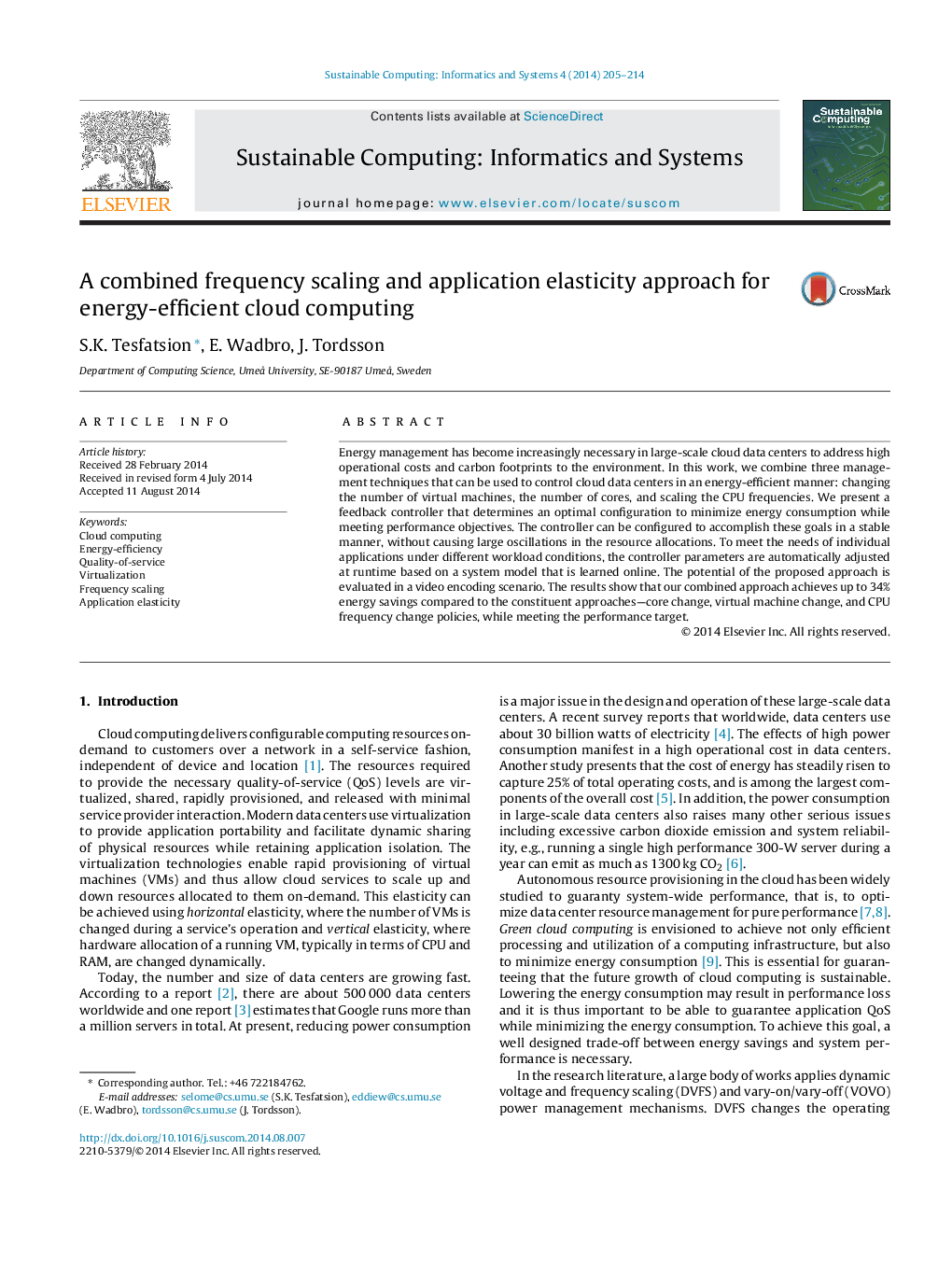| Article ID | Journal | Published Year | Pages | File Type |
|---|---|---|---|---|
| 493931 | Sustainable Computing: Informatics and Systems | 2014 | 10 Pages |
•We model the relationship between performance/power and different configurations.•The combined approach saves the most energy among the compared 3 approaches.•The controller handles trade-offs between energy minimization and achieving the SLA.•The controller can accomplish the minimization without causing large oscillations.
Energy management has become increasingly necessary in large-scale cloud data centers to address high operational costs and carbon footprints to the environment. In this work, we combine three management techniques that can be used to control cloud data centers in an energy-efficient manner: changing the number of virtual machines, the number of cores, and scaling the CPU frequencies. We present a feedback controller that determines an optimal configuration to minimize energy consumption while meeting performance objectives. The controller can be configured to accomplish these goals in a stable manner, without causing large oscillations in the resource allocations. To meet the needs of individual applications under different workload conditions, the controller parameters are automatically adjusted at runtime based on a system model that is learned online. The potential of the proposed approach is evaluated in a video encoding scenario. The results show that our combined approach achieves up to 34% energy savings compared to the constituent approaches—core change, virtual machine change, and CPU frequency change policies, while meeting the performance target.
